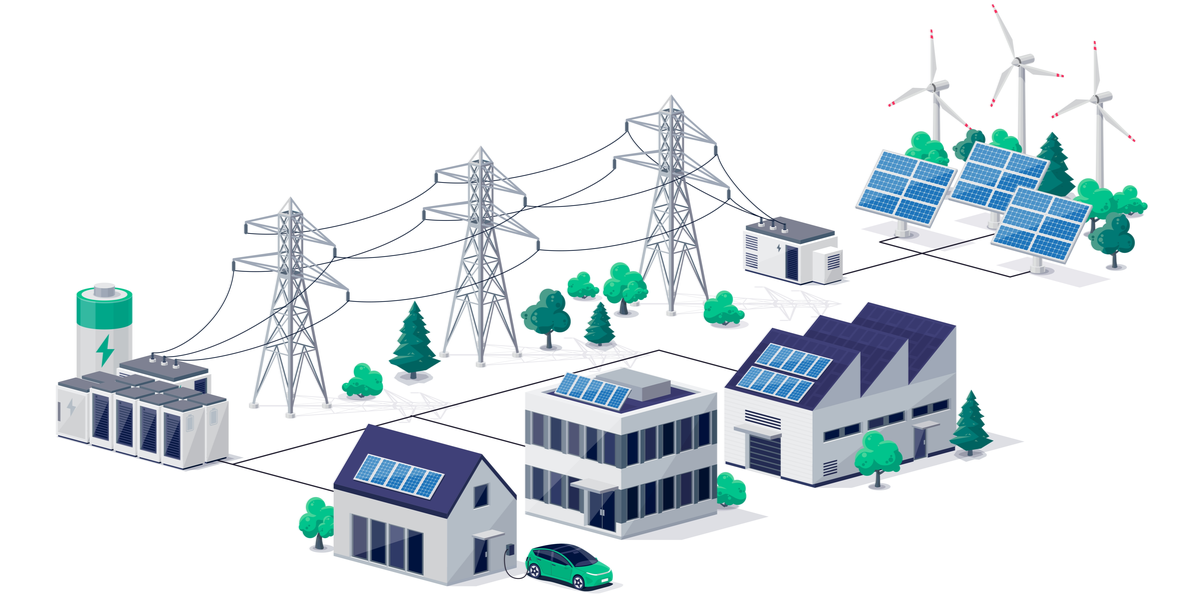What Happens When We Start Using Less? A Few Challenges Facing Utilities
Let's Save Energy
Alliance to Save Energy's Blog
What Happens When We Start Using Less? A Few Challenges Facing Utilities

In the United States, electric utility companies are primarily responsible for the generation and distribution of electricity.[1] Electric utilities have traditionally depended on large, centralized power plants, usually burning fossil fuel, to produce electricity. Under the traditional utility business model utilities depend on increasing energy sales to earn a profit. However, the traditional utility model is facing challenges. In much of the United States, electricity sales have stagnated and even decreased, even as electrical devices have proliferated in our homes, schools and work places. Nationally, electric retail sales increased an average of over 2% from 1982 to 2007, but since then sales have stagnated with a slight average annual decrease of 0.2%.[2]
While numerous groups would applaud this trend, some utilities worry about how to maintain reliable and affordable service, including covering fixed costs of transmission and distribution of power, on the back of fewer kilowatt-hour sales. The combination of growing energy efficiency and distributed generation is altering the landscape for utility companies across the country and will fundamentally impact the way they operate. It’s important to recognize that changes in the economy are also influencing sales, but for now we’re taking a closer look at these two factors and how they are impacting utilities.
Energy Efficiency
Energy efficiency has had a significant impact on electricity consumption across the residential, commercial and industrial sectors. There are a large number of energy efficient products that have produced energy savings in all three of these sectors, such as the following examples:
- In the residential sector home appliances account for the majority of a home’s electricity consumption. ENERGY STAR, a voluntary EPA program designed to promote energy efficient products, helped save more than 337 billion kWh in 2012 through widespread use of qualified home appliances.
- In the commercial sector upgrading light bulbs can produce large energy savings. For instance, Macy’s Corporation replaced traditional light bulbs with LEDs in more than 800 stores, resulting in a 73% reduction in energy consumption.
- In the industrial sector, pulp and paper manufacturers offer a good example. Flambeau River Papers was forced to close in 2006 due to high energy costs and outdated equipment, but following several energy efficiency investments the plant reopened and was able to produce each ton of paper using 15% less electricity. Furthermore, these investments produced aggregate savings in excess of $10 million dollars through 2010.
Indeed, electric utilities have delivered many energy efficiency savings themselves, recognizing the role of efficiency to moderate demand and reduce the need for costly supply-side investments. The Institute for Electric Innovation reports that U.S. electric utilities programs saved 126,000 GWh in 2012 or the equivalent of powering 12.2 million homes.
Solar Power and Distributed Generation
As the production process for solar panels improves the overall cost of installation continues to drop. For example, the cost per watt of silicon photovoltaic cells (used in all solar panels) has dropped from $76 in 1977 to a mere $0.36 today. Combine this trend with rising energy costs and entrepreneurial solar vendors that can reduce or eliminate initial capital costs for customers, we see more households opting to produce their own electricity through photovoltaics (PVs). Simply put, as fewer households rely exclusively on utility companies for electricity, sales have dropped.
The issue becomes a bit more complicated when net metering is involved. Under net metering when households or businesses generate more electricity than they consume, the excess is sent back to the utility to defray customers’ electricity purchases. Essentially the customer is selling power to the utility at the retail rate, which covers transmission and distribution costs that the net metering customer does not incur. Therefore, households are able to earn more per unit sold than the utility does. There can be benefits to utilities, since solar generation often corresponds to peak demand times and can reduce strain on distribution systems. However some utilities say that net metering customers are shifting some costs to non-net metering customers.
Conclusion
These factors highlight some of the challenges facing utility companies, and it is important to note that each utility faces a unique situation based on the variables of the region in which it operates. The traditional utility business model is undergoing stress as more consumers embrace efficiency and alternative sources of energy. Fortunately, many utility companies are embracing strong efficiency programs, and will continue to have the incentive to do so if strong policies are implemented across states and at the federal level.
Stay tuned: upcoming blogs will examine additional economic challenges and the ways that utility companies are adapting to accommodate them.
[1] In “vertically integrated” states electric utilities own and operate generation, transmission and distribution of electricity. In some states, electric utilities may primarily distribute power generated by other companies.
[2] The period from 2007-today is complicated by the recession, but even though sales did rebound in 2010 they have slowly declined since then.
STAY EMPOWERED
Help the Alliance advocate for policies to use energy more efficiently – supporting job creation, reduced emissions, and lower costs. Contact your member of Congress.
Energy efficiency is smart, nonpartisan, and practical. So are we. Our strength comes from an unparalleled group of Alliance Associates working collaboratively under the Alliance umbrella to pave the way for energy efficiency gains.
The power of efficiency is in your hands. Supporting the Alliance means supporting a vision for using energy more productively to achieve economic growth, a cleaner environment, and greater energy security, affordability, and reliability.



